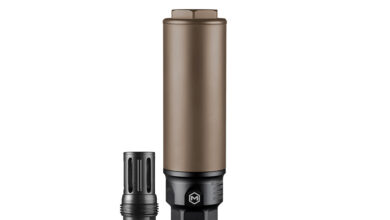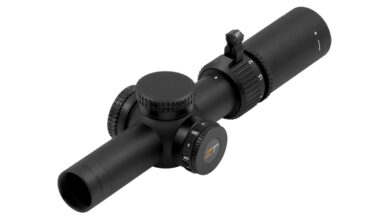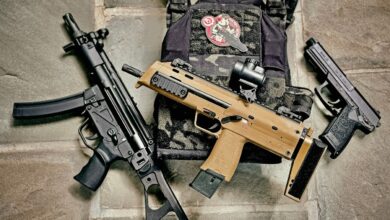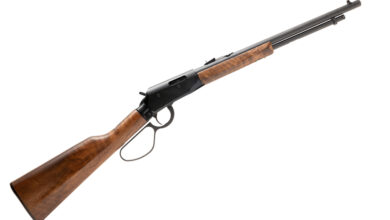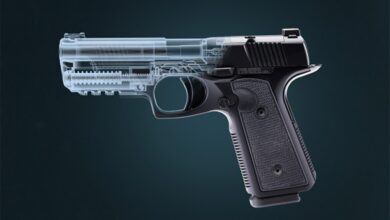AR-15 Barrel Comparisons: The Long And Short of It
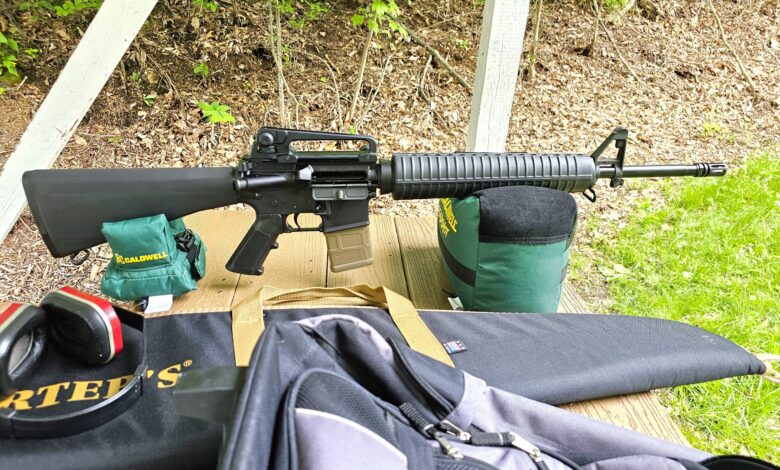
When it comes to the AR-15, civilians love to mimic the military. Many folks like to have a carbine that resembles what the SEALs or Delta operators are using. Some think, “If it’s good enough for the SEALs, then it will suit my needs.” Others like to fancy themselves as special operators or the equivalent. For others, it’s a matter of practicality, as shorter carbines are easier to maneuver and store.
When the “Assault Weapons Ban” sunset provision occurred in 2004, the AR-15 market really exploded, and the gloves came off. One of the most popular AR-15 barrel profiles emerged (and is still in vogue): the 16-inch barrel with the step cut into it to accept an M203 grenade launcher. Do any of us have an M203? Probably not. And we won’t be mounting one any time soon on our civilian carbines. But they look similar to what the military uses, and so they’re popular.
Fashion Trends
As mentioned, the trend has been to go as short as possible with AR-15 barrels and has been for a couple of decades. Inside buildings and/or vehicles, they are easier to maneuver than longer barrels. And if you’re going to stow the carbine in a vehicle, it has an edge over its bigger brothers.
But, just like anything else, we can get a tad burned out on too much of a good thing, which is what prompted this article. You see, a good buddy of mine saw an AR-15 with a standard, 20-inch barrel and asked me if I thought he’d be crazy for buying one. It’s made by Palmetto State Armory (PSA) and resembles the M16A2 with a removable carry handle (the rifle has a Picatinny rail on the receiver).
I told him I thought it would be rather fun to have a full-sized rifle, as I hadn’t handled one for a long time. My ARs have shorter barrels for a couple of the reasons mentioned above. But back in the 1990s, I was issued a Colt HBAR as the cover weapon to accompany my Remington 700 Police Rifle on a tactical sniper team. I went through a lot of training with that HBAR, and it did everything that I asked it to and then some. So, the chance to play with a similar rifle brought back a flood of memories.
Palmetto State Armory
I won’t belabor the description, but PSA is based in South Carolina, and they make some budget AR-15s that are actually quite good. We know they’re quite good because we just ran one through its paces to see.
The sample we tested was the Palmetto State PA-15 with a standard “A2” type 20-inch barrel. It features a standard birdcage flash suppressor and an A2 carry handle that bolts onto the Picatinny rail that graces the top of the receiver. It’s nothing crazy, but it does the job – and it does it well.
The $599.99 price tag of the PSA PA-15 is a little shocking because the rifle is surprisingly well done, including a bolt that’s shot-peened and MPI tested. The finish looks good as well. The rifle is accurate, at least to the 200-yard limit of the range that we tested it at. Reliability was perfect with both 5.56mm and .223 ammunition.
The balance of a full-sized AR-15 is a thing to behold, especially after hefting the carbines and pistols over the years. It just inspires confidence. The price is a steal for a plain vanilla rifle of this type, and I’d consider owning one myself.
But this rifle got me thinking about barrel lengths and their advantages and disadvantages. Let’s take a look at some options.
Performance & Options
In addition to barrel length, the twist rate of said barrel will have an effect on bullet velocity. Generally, for each inch of barrel length that we lop off, the 5.56mm will lose approximately 50 fps of velocity. For the 62-grain M855 round to produce fragments in flesh, it must be traveling about 2,500 feet per second. Some lighter rounds will fragment at lower velocities, so this is not an exact science, at least for the purposes of this article.
Pistols
There are more AR-15 pistols out there than you can shake a stick at. The one that I have available has a barrel length of 7.5 inches. It’s super short while still being 100% reliable. As far as maneuverability, this little thing is off the charts for close-in work, as well as working inside vehicles or close quarters in buildings. It’s equipped with a pistol brace, and at the time of this writing (who knows what next week will bring), it is legal to have affixed to the pistol.
So, for maneuverability, it gets the highest marks possible. But how about velocity? And muzzle blast?
Velocity will obviously vary depending on bullet types and manufacturers since they use different powders and bullet construction. Generally speaking, a .223/5.56 caliber round can be expected to travel between 2,200 and 2,400 feet per second from a 7.5-inch barrel.
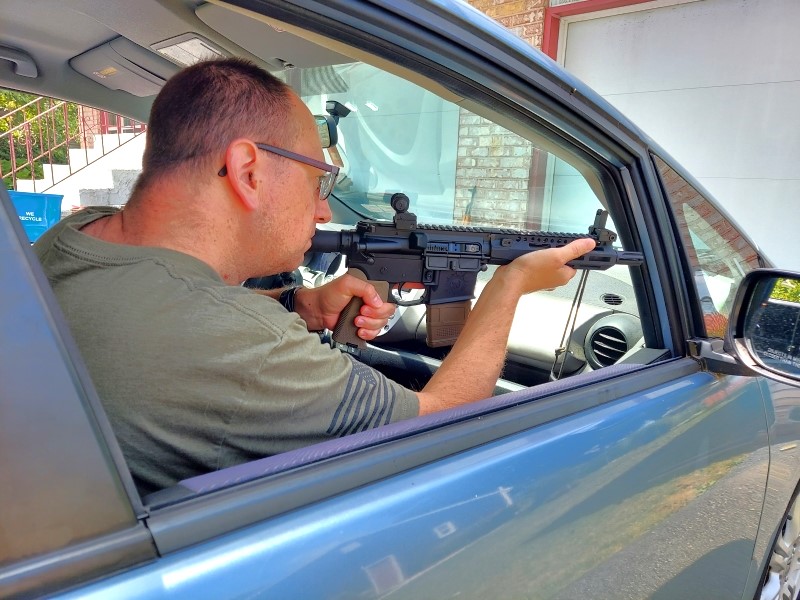
Plenty of folks reflexively regurgitate that such velocity is “just a glorified .22 Long Rifle,” which is incorrect and basically wrong for a few reasons. The first is that a .22LR doesn’t come anywhere near that velocity, with the faster .22LR rounds reaching about 1,600 fps. Most are way under that.
The next point is that .22LR ammo is normally solid, whereas the .223 and 5.56 rounds have a core and a jacket and tend to break apart on impact. The question becomes whether the .223/5.56 will break up at these much slower velocities since they were designed to travel at much higher speeds. Finally, most .22LR rounds are lighter than 5.56mm rounds, so they’re not equal.
As a result of traveling much more slowly than they were intended, the .223/5.56mm rounds won’t break up nearly as much when fired from pistol-length barrels. Does that make them worthless? Hardly. They will still create nasty wounds, but not as effectively as at high velocities. However, they will still penetrate a fair amount of media, even at over a hundred yards. In flesh, the round will penetrate a good distance because it’s not fragmenting as it would at higher velocities, so the bullet holds together.
As long as the user’s expectations are realistic, I think the AR pistol is effective, at least at close range. When deployed from inside a vehicle, they seem to shine because they don’t hang up on everything in the interior. They’re also more convenient to carry.
Muzzle blast and flash can be nothing short of spectacular with such a short barrel, especially at night. The noise certainly increases when compared to the longer barrels.
Carbines
Generally speaking, carbines have a barrel length of 16 inches. Some are available with a 14.5-inch barrel, but unless they are registered as a Short Barreled Rifle (SBR), they will have to have a permanently attached muzzle device to bring the overall length up to 16 inches. Most people have 16-inch carbines that have threaded barrels and muzzle devices attached.
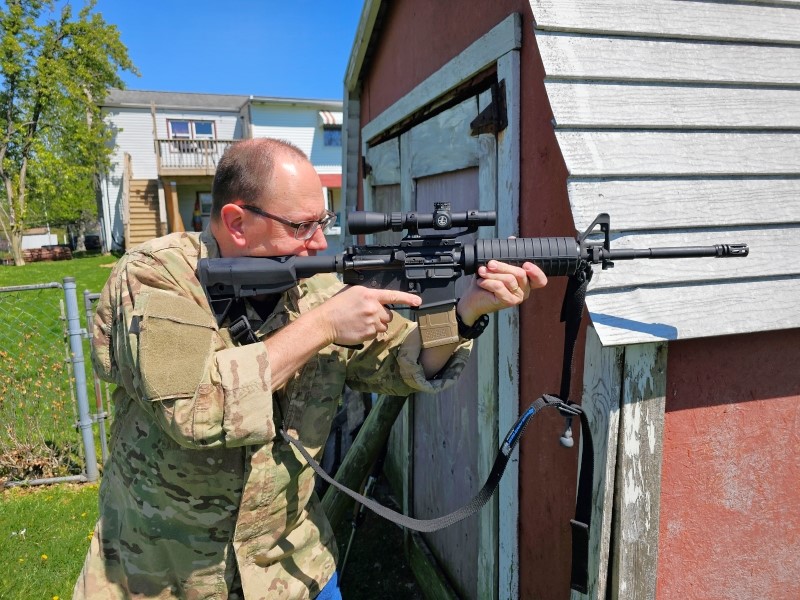
With .223 ammunition of 55 grains, the muzzle velocity from a 16-inch barrel is typically about 2,950, or in that neighborhood. M855 (green tip) produces about 2,920 fps from a 14.5-inch carbine. So, a 14.5-inch barreled carbine would be expected to have enough velocity to cause the M855 round to fragment out to around 125 meters. A carbine with a 16-inch barrel would have a slightly longer range of having the projectiles expand, but not much.
The carbine isn’t as effective as a rifle because it doesn’t create as much velocity or have as much range. Generally, however, they are extremely handy to use and can easily reach a couple hundred yards to make accurate hits on targets. The question becomes, how far do we realistically need to reach?
Rifles
Back when everyone had the full-sized, rifle-length M16/AR15, the spec ops guys adopted carbines. In Vietnam, it was the CAR-15 with an 11.5-inch barrel. Later on, it evolved into the M4 with a 14.5-inch barrel. All the cool kids had to have a carbine.
But is the rifle really that bad? Sure, it’s longer than the carbine, but it has done the job for decades and still can.
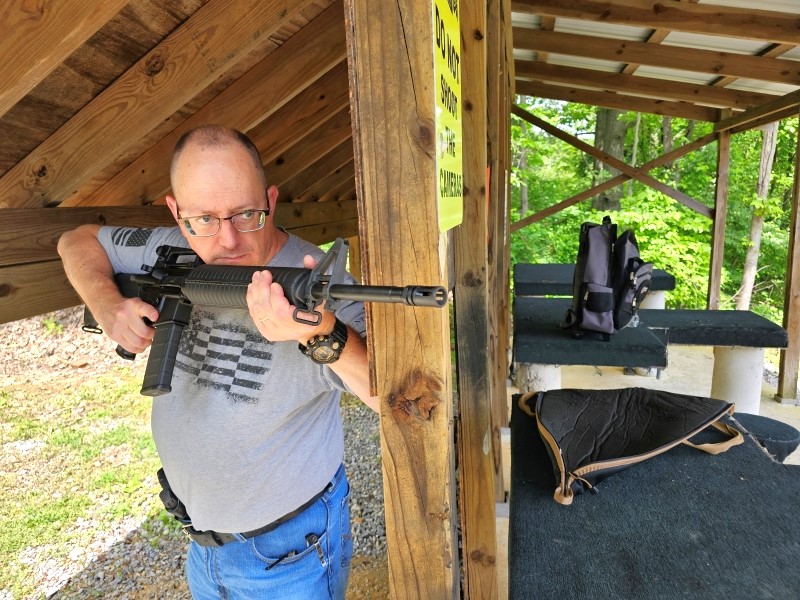
M855 produces about 3,150 fps from a 20-inch barreled rifle. The expectation for fragmentation from sufficient velocity of this round would be around 190 meters. Of course, there are lighter rounds that will reach higher velocities.
Years ago, I conducted a simple test of shooting “Hollywood” cinder blocks with both the carbine and full-sized AR-15. The 20-inch barreled rifle projectiles penetrated both sides of the blocks, while the carbine would only penetrate one side. Obviously, that extra velocity adds considerable power to the round.
Given its superior accuracy, the rifle can hit targets more efficiently at a longer range. If you’re after precision, the rifle is the way to go.
Parting Shots
Each barrel length has its strengths and drawbacks. The carbine can fill a few roles but can’t quite do everything that the rifle can. Pistols are very maneuverable, but their ballistics aren’t great, and their range is very limited. Rifles offer the best ballistics but are more awkward in close confines.
I’m wondering if we’ll see a trend of people gravitating back to the 20-inch barreled rifle configuration. You know how trends go: a certain percentage of people go “retro” every now and then. Could we again realize the advantages of the full-sized rifle?
I’m seriously considering getting a 20-inch AR-15 again. The cool factor of the carbine really doesn’t matter to me anymore. It’s not like I will be fast-roping from the Space Shuttle into a combat zone. But the terminal performance of the 5.56 from a 20-inch barrel is definitely attractive.
The fact that we can simply buy a few different upper receivers with different barrel lengths is a big plus, too, because we don’t necessarily have to purchase new rifles every time. We can tailor our barrel length to fit the task that we want to accomplish.
It’s interesting to see how the AR-15 platform has evolved over the years and not the trends that we’ve seen. Watching which direction it goes in from here will be fun. We’d like to hear from our readers which barrel length is their favorite, so feel free to drop a comment in the comment section!
The post AR-15 Barrel Comparisons: The Long And Short of It appeared first on The Mag Life.
Read the full article here

